By Bruce Hammett, President and CEO; and Denny McKissic, National Account Manager, WECS Renewables
Not keeping wind turbines positioned toward the wind is a critical revenue killer for operators, not to mention the maintenance costs associated with slight positioning problems. Maintaining directional control requires properly functioning wind direction sensing systems and robust long-life yawing systems.
The basic electromechanical yaw components include a slew ring on which the entire weight of the nacelle rests, a series of skid-pads or “pucks” that create a bearing-like surface, several electric motorized-gearboxes to facilitate movement around the slew ring and some form of brake to eliminate uncontrolled movement of the nacelle. All of these items have maintenance requirements.
The early GE 1.5x platform uses a conventional heavy steel yaw plate bolted to the tower over which the nacelle rotates using a combination of 3-in. pucks that serve as the bearing surface. Each puck is pressed upon by an adjustable spring-loaded brass canister (piston) designed for constant pressure. The yaw motor-gearbox, which includes an internal electric brake, rotates a pinion gear against the slew ring outer gear to turn the nacelle left or right. Computer-developed directional algorithms can cause this action several times per minute, or a single action for parking in high winds.
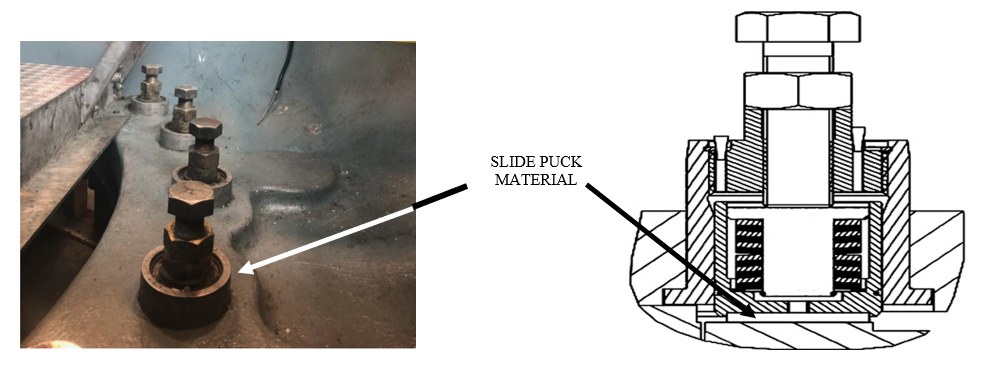
GE 1.5X yaw design
The costliest component for the system is the slew ring. Most of that cost includes the necessity to lift the entire nacelle to replace the slew ring, an action that requires cranes and significant downtime. Therefore, it is critical to maintain proper rotation against the pucks and maintain the integrity of the surface between the puck and the slew ring.
Maintenance is often left undone. The result, just like lack of maintenance on an automotive disc brake, is damage to the slew ring from the improperly maintained puck system. Maintenance issues can simply be improper attention to lubrication, improper tension on the spring pressure mechanism from the brass piston, and lack of monitoring of the wear on the puck itself.
WECS Renewables has developed a field proven set of components that directly relate to the O&M needs of the GE 1.5x fleet: A newly designed Super Puck and Super Piston, a universal robust yaw brake-motor, a piston removal tool and a portable de-burring/resurfacing system.
Made of a proprietary polyester-resin material, the Super Puck is a lightweight replacement for the brass piston. The effect is to eliminate the abhorrent “fog-horning” noise caused by these two items interacting with the slew ring, and to combat the lack of maintenance, extending the life of these components as well as improving the wear factor. The degradation of the OEM puck often results in destruction of the brass piston which results in physical damage to the slew ring. All of this can be avoided.

Replacement of the spring kit internal to the Super Piston is a best practice necessity. WECS delivers the new Super Piston with a set of new springs prepackaged and adjusted for maintenance. If the original brass piston has been damaged by wear and is difficult to remove, special techniques such as grinding and the use of hydraulic tools may need to be used.
To remove the damaged brass piston, a specialty tool system kit has been developed with specifically designed hardware to ease the removal of a stuck/seized brass piston. The WECS Piston Extraction Kit includes all the various tools needed to properly remove a damaged brass piston.
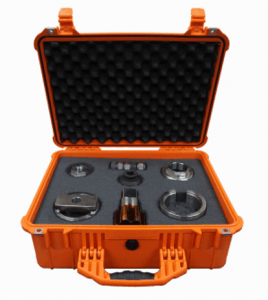
Piston Extraction Kit
In the event of severe damage to the slew ring-puck interface, resurfacing is an option short of total replacement of the ring itself. To facilitate grinding and preparing of the ring for new Super Puck or Super Piston application, WECS has developed a portable resurfacing tool, light weight for a tough job.
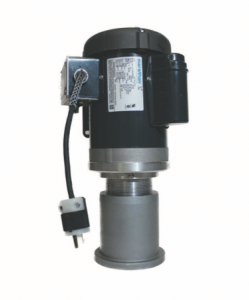
Slew ring resurfacing system
Turbine manufacturing and delivery practices in the days of GE 1.5x installations necessitated that the manufacturer turn to multiple sources for items such as the yaw motor-gearbox combination. Each original motor manufacturers had slight differences in physical and mechanical condition of the product, including a voltage change during the multi-year run of manufacturing. Each turbine within a fleet has the unfortunate prospect of having been delivered with a slightly different yaw motor-gear than its neighbor. WECS has narrowed site inventory choices with the universal yaw motor to meet the needs for various OEM platforms.
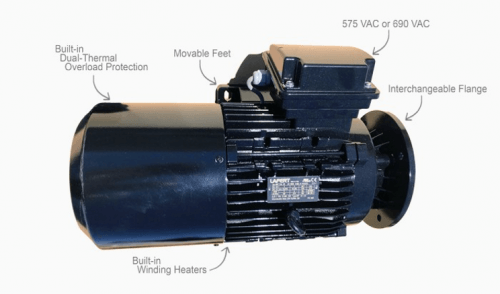
Universal yaw motor
Early GE 1.5x platforms utilized a coolant pump design that had a fault condition caused by leaking liquid from the pump seal that penetrated the pump drive motor below. The result was a catastrophic failure of the motor requiring repair of the pump seal and replacement of the motor. WECS recognize the problem and developed a motor pump combination that is form-fit and functions to the platform’s physical needs, but utilizes a pump connected to the motor with a magnetic drive coupled system. This has been developed into a bolt-in replacement and is available from stock.
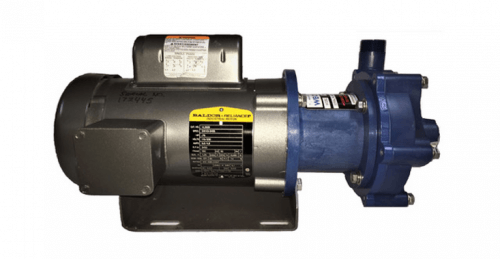
Magdrive water pump
Bruce Hammett is President and CEO of WECS Renewables, and Denny McKissic is the National Account Manager for the WECS O&M components team. WECS is a distributor of components designed to extend electrical, mechanical and hydraulic the life of wind turbines, solar and storage systems. WECS works with vendors worldwide to provide factory replacement components, OEM alternatives, updates and obsolescence alternatives.
Filed Under: Components, Featured, Nacelle, O&M, Services

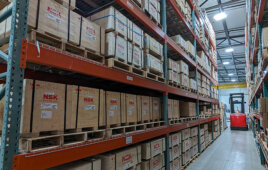
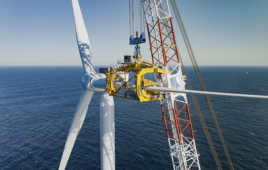
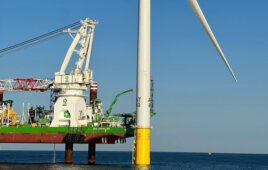
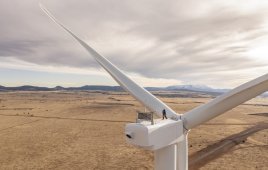
Does anyone know if this yaw angle sensor has ever been used?
https://californiawindelectric.com/precision-wind-turbine-yaw-sensor/